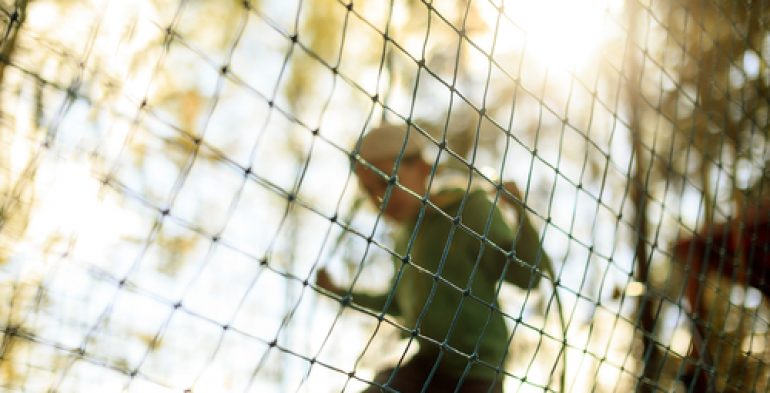
The holidays are here, which means no school and a lot more time to fill. But the learning doesn’t have to stop just because school’s out – here are some fun, easy and creative activities that’ll also help your child develop key skills.
1. Popsicle time
Cooking requires a variety of skills like reading, sequencing, nutrition, meal planning, maths for measuring ingredients, and so much more. This popsicle recipe is an easy way to practice all these skills and give your child something they’ll love to eat on a hot summer’s day.
For best results, encourage your child to choose the fruits they love to eat. Create a shopping list together (using words or pictures) and let them help you choose ones that are perfectly ripe at the shop.
What you’ll need:
Fruit
Fruit juice / lemonade / fruit punch
Popsicle molds
Popsicle sticks
A freezer
Peel and/or wash the fruit, cut them into small chunks. If you don’t want to involve sharp objects, choose small fruit like berries or ones that are soft enough to break apart with your hands.
Put the fruit chunks into the popsicle molds, asking your child which fruits taste good together. Try as many combinations as you can.
Add your popsicle sticks.
Pour the juice on top.
Freeze for at least four hours, or until frozen solid.
Enjoy!
If your child is comfortable with loud noises, you could also try using a blender to make a smoothie paste before freezing it in the popsicle molds.
2. Laser obstacle course
A fun, imagination-based activity. Maneuvering in and out of the lasers helps with balance, coordination, controlling reflexes and self-awareness. Not only is this game really immersive, it can also help develop better listening and observation skills when played with more than one child.
What you’ll need:
Ball of brightly colored wool or string
Blu-tack or masking tape
Duvet covers
Pillows
Blindfold (maybe a scarf or tie)
James Bond soundtrack (optional)
Choose an area in your home. A hallway is perfect.
Health and safety is important, so lay down duvets and pillows along the floor and covering any edge.
Take the string and make a web by criss-crossing between the walls, holding in place with Blu-tack or tape. Ask your child to get involved with making the web.
The aim of the game is to get through the lasers without touching them.
For super ambitious spies, introduce a blindfold. Can they remember the route through the lasers? This helps with short-term memory index recall.
Use the blindfold again for siblings playing together so that they guide each other through the web. This is great for communication skills!
3. Picture cards
Most kids with autism focus and learn much faster when information is presented to them visually, so using picture cards can help in lots of ways to engage your child. This is not so much a game, but a great way to encourage your child to communicate what activities they want to do.
What you’ll need:
Pictures of your child
Something adhesive
Take pictures of your child doing activities they enjoy around the house (playing tickle game with you, water play in the garden, reading a favorite book etc.)
Put the pictures up around the house in the right areas (e.g. a picture of your child brushing their teeth in the bathroom).
Explore all the ways you can make your home rich with visuals – for example, by creating a daily timetable for everyday activities like getting out of bed, having breakfast and getting dressed. Visual schedules have been found to be very beneficial for children with autism.
4. Marbles
Marbles can be enjoyed with family or friends at different levels of functionality. It’s a great way to encourage connection with others, and involves construction, sorting, color and texture. Marble runs also help teach a basic understanding of cause and effect and can keep kids motivated for longer periods of time.
What you’ll need:
Marble run – look for a transparent one you can modify easily
Marbles
Sort the tubes, chutes and spinning wheels into categories, ready for building.
Build the runs. With older children, focus on building complicated structures, following directions and encouraging them to describe what they’re doing.
Play! Work with your child on tracking the progress of the ball or grasping the marbles.
5. Let it snow!
A child who enjoys exploring different textures might really like activities that offer the opportunity to touch multiple textures, temperatures and consistencies of materials. This activity provides lots of different sensory experiences, and your child will love helping to mix the ingredients. The snow is cold to the touch and great for smearing and handling!
Make the activity go further with storytelling and song, by adding other toys to spark their imagination. You could even add food coloring or lavender oil for a soothing evening activity.
What you’ll need:
Shaving cream/foam (NOT gel)
Baking soda – approx. 160g
Silver glitter (optional)
Wash basin
Mixing bowl
Pour the baking soda into the mixing bowl.
Slowly add in the shaving cream and mix in using your fingers. Little by little works best – you can always add more later!
If you have it, add in the glitter for some added sparkle.
Keep mixing until the mixture becomes like powdery flakes.
Place your bowl of snow in the fridge. An hour is about right.
Transfer the mixture to a wash basin. This keeps it all contained and minimizes mess during play.
Let it snow!
Article Originally Published here: https://thinkinc.me/blog-post/5-holiday-activities-for-children-with-autism/









